I’ve been cleaning out closets and boxing up clothes the kids have grown out of lately. Stuffed in a drawer in my daughter’s room was a cute sweater from Old Navy with a pretty ruffled hem that I bought on clearance a few years ago – and never pulled out last winter when it was the right size for her! Yup, I’m smart enough to save money by buying clothes a few seasons ahead, but I’m not smart enough to remember what I did with them. Nice. Anyway, I loved the little ruffled hem, so I decided to make my own version.
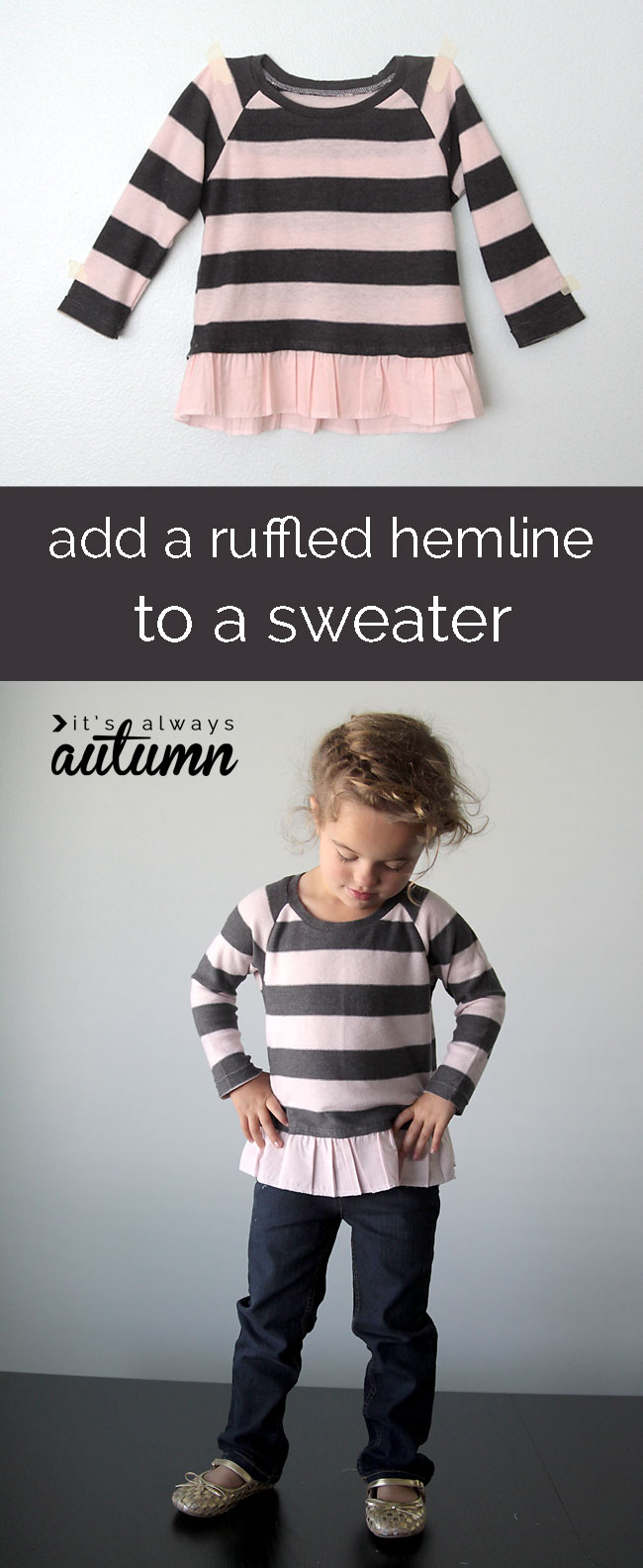
I used the raglan tee pattern that I drafted up last week to make a sweater, then added a ruffle at the bottom, but this would also be an easy way to dress up a purchased sweater.
Especially if you have a little girl who loves ruffles.
In addition to a sweater, you’ll need 1/4 yard of a lightweight coordinating fabric for the ruffle. I found some inexpensive broadcloth (by the quilting cottons) that matched the pale pink stripe in my sweater perfectly, but for many sweaters a contrast fabric would work just as well as a matching one.
Since I was making my own sweater, I just didn’t hem it. If your sweater has ribbing at the bottom, go ahead and cut it off. If it just has a hem that’s folded up and sewn (like a t-shirt does), leave it as is. Cut two strips of the coordinating fabric about 4 inches tall and about 1.5 times as wide as the bottom of the sweater.
Sew the two strips together along the short sides, creating a long circle of fabric. It’s easiest to hem the ruffle right now. You can use a narrow rolled hem, or just serge or zigzag the bottom edge in (I serged the bottom edge). Next you’ll sew two rows of gathering stitches all the way around the top edge. (Gathering stitches are just a long stitch length at a low stitch tension.) I sewed the first row about 3/8 inch from the edge, and then the second row about 1/4 inch from the first. TIP: if you sew your gathering stitches in different colors that DON’T match your fabric it’s much easier to find them to pull out later on.
Now you can pull on the bobbin threads to gather up the ruffle until it is just a tad bigger than the bottom of the sweater. If the sweater isn’t already hemmed, turn up the bottom and press well.
Slide the ruffle up inside the sweater so the gathered stitches are just covered, and pin it really well all the way around.
Sew the ruffle to the sweater using either a zig zag stitch or a double needle. If your sweater was already hemmed, try to sew right on top of the original stitch lines. A double needle is what I like to use – it gives a great, professional look, and it’s super easy! (Just google for tutorials.) I avoided trying one for a long time just because I was lazy, but now I use it all the time.
If, as you are sewing, it seems like your sweater is stretching out, use a pin to gently push it under the presser foot so it stays even with the ruffle beneath it. I also find that if I sew a little further away from the edge (i.e. using 5/8 inch seam allowance instead of 3/8 inch), sweater material is less likely to stretch out.
Once the ruffle is attached, find your gathering threads and pull them out. Then press the ruffles flat, using plenty of steam to help the sweater lay flat. Trim any excess fabric on the inside of the hem.
A cute little update any girl is sure to love. Including myself – I’m trying to figure out which of my sweaters I can do this to.

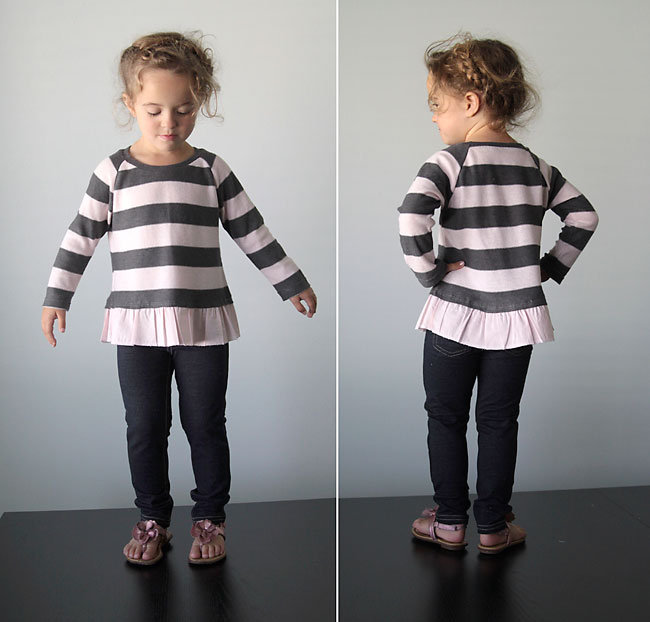
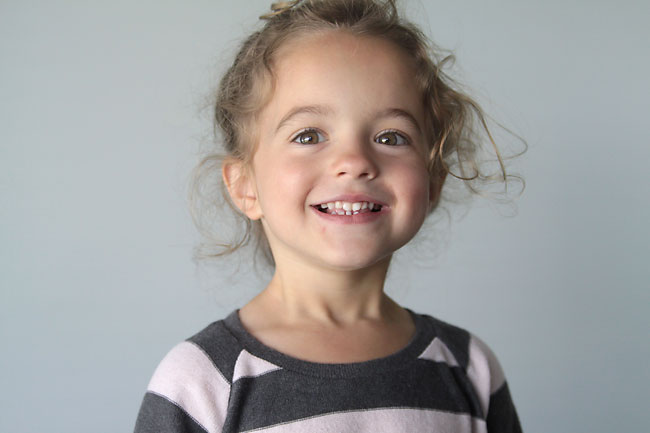
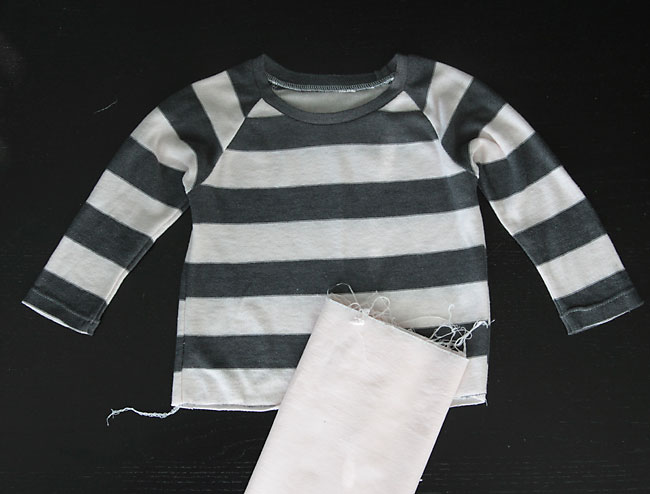
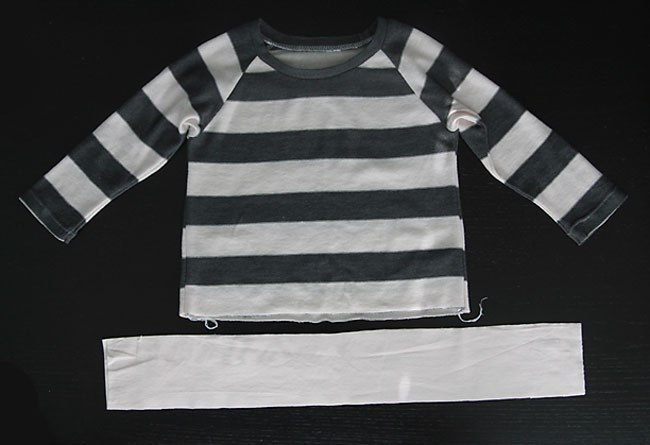
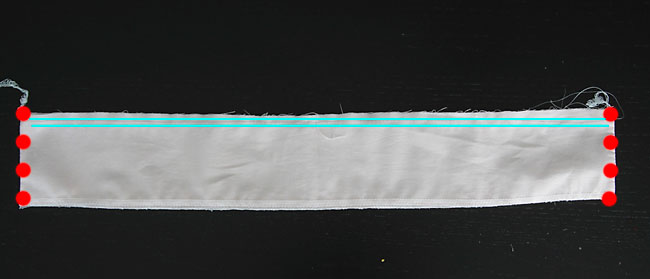
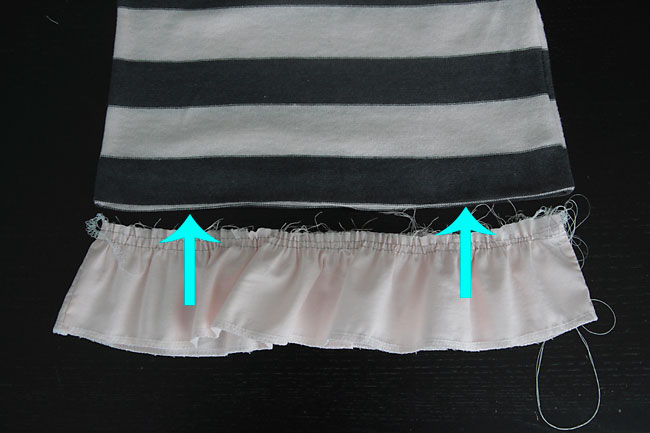
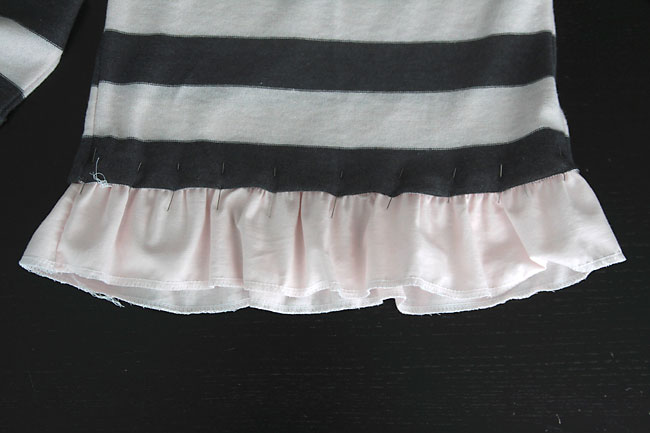
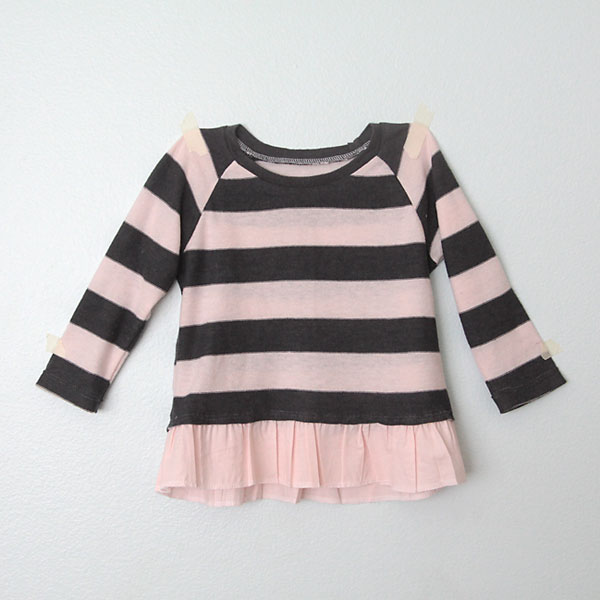
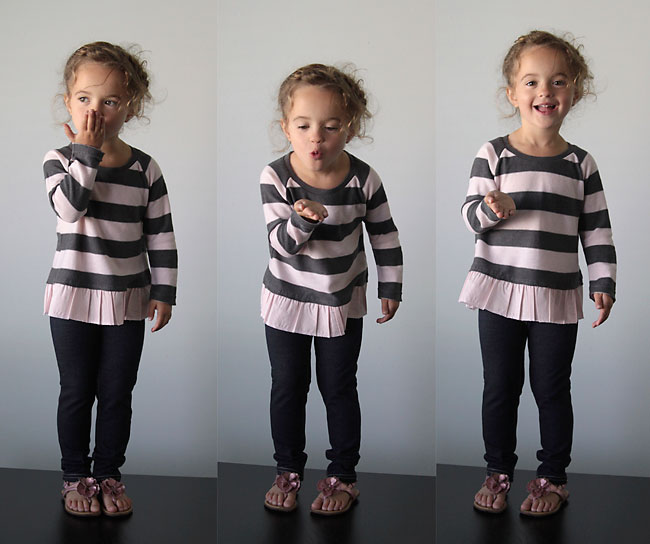
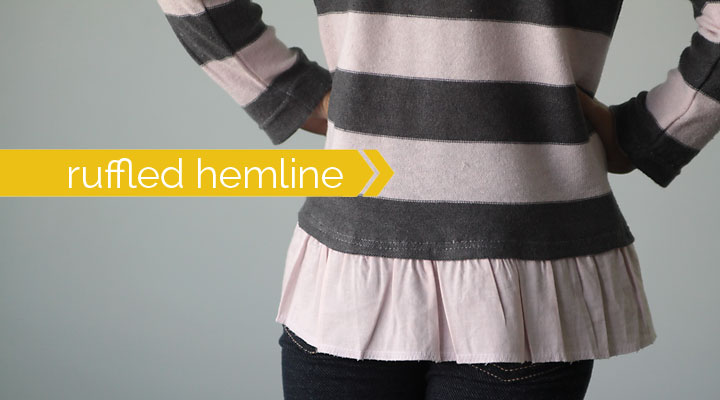
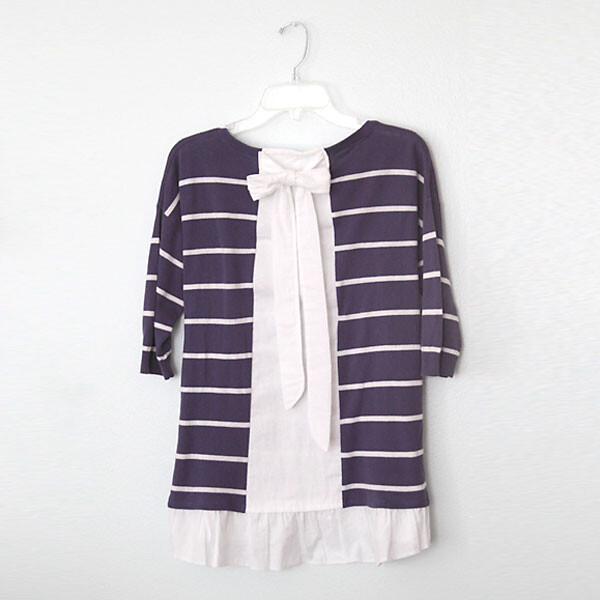
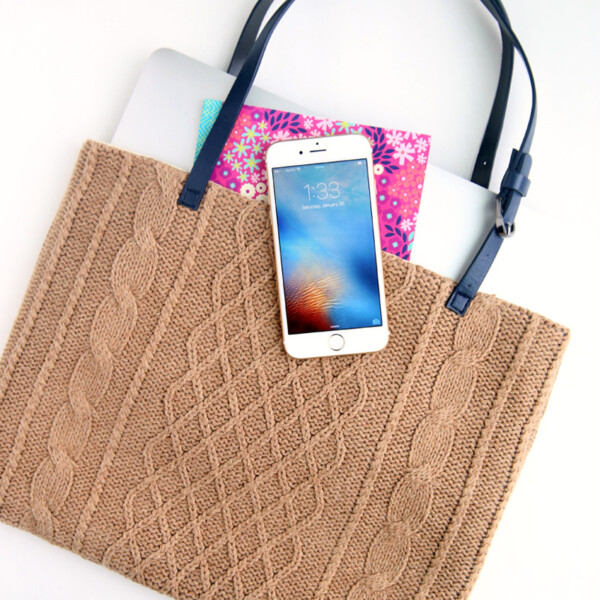
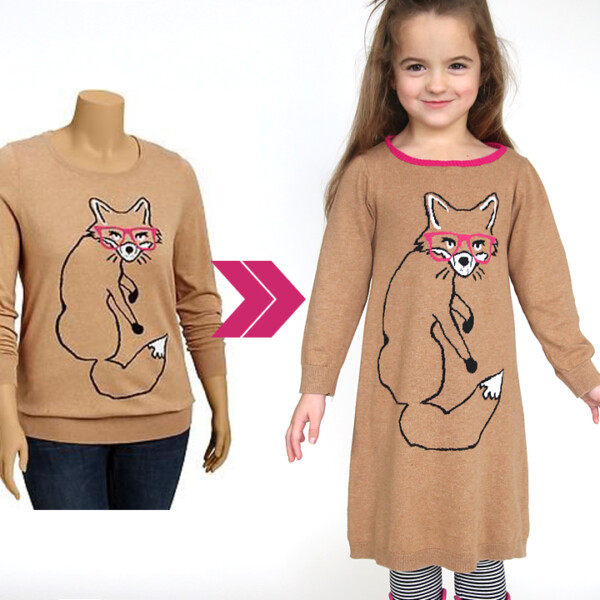

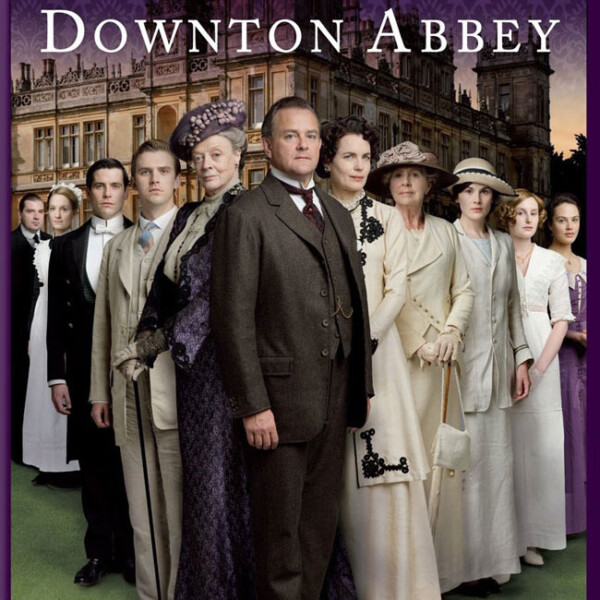
L Warren says
I’m sure you could, but it would have to be 1 1/2 times as wide at the bottom as the sweater or shirt you’re attaching it to, to get a ruffle out of it. (Dad’s old undershirt? Do dads even wear undershirts anymore?)
L. Warren says
I’ve been wanting to add complimentary “sheer” and/or “flowy”(in some way) ruffles to my favorite cotton/spandex cami’s. My guess is, because they’re knit fabric, it should work similarly. These could be adorable as is, or great to peek out under a sweater. Your tutorial is about the closest one I could find, so I’m going to try it. I might also play around with the ruffle function on my new serger..but I’m already intimidated by the thing since I haven’t yet tackled the learning curve for just “normal” serging. There are also “ruffle feet” for sewing machines. Haven’t tried them. Maybe I will at some point….just to find the easies method. The great thing about your method is that it “will” work….It may not be the speediest way, but there is no additional equipment to buy and gathering by hand might actually yield better results on sheer fabric (more control)
Donna says
Love this look. Happy little girl wearing her shirt. I have also used T shirt fabric to add length to shirts and mini skirts that are way too short for granddaughters to wear. T-shirt fabric is stretchy and works so well on items like appliqued names onto fleece fabric blankets.